- Home
- Harry Harrison
The Turing Option Page 4
The Turing Option Read online
Page 4
Benicoff did as he was told, then turned and resisted the impulse to come to attention. “I wasn’t told that you would be here, General Schorcht.” If Schorcht had a first name no one knew it. It was probably “General” in any case.
“No reason you should be, Benicoff. Let’s just keep it like that for a while.”
Benicoff had worked with the General before. He had found him ruthless, unlikable—and efficient. His face was as wrinkled as a sea tortoise—and he was probably as old as one. At one time in the misty past he had been a cavalry officer and had lost his right arm in battle. In Korea, it was said, though Gettysburg and the Marne were mentioned as well. He had been in Military Intelligence ever since Benicoff had known him; something high up, very secret. He gave orders, never took them.
“You’ll report to me once a day, minimum. Oftener if there is anything of importance. You have the secure number. Input all your data as well. Understood?”
“Understood. You know that this is a real bad one?”
“I know that, Ben.” For a moment the General relaxed, looked almost human. Tired. Then the mask dropped back into place. “You’re dismissed.”
“Is there any point in my asking what your involvement is in this matter?”
“No.” The General made himself an easy man to hate. “Report now to Agent Dave Manias. He heads the FBI sweep team.”
“Right. I’ll let you know what they have found out.”
Manias was in his shirt sleeves and sweating generously despite the cool of the air-conditioning, fueled by some furious inner fire as he punched rapidly into his hand computer. He looked up as Benicoff approached, wiped his palm on his trouser leg and shook his hand firmly and quickly.
“Glad you’re here. Told to hold my report until you showed.”
“What have you found out?”
“This is a preliminary report, okay? Just what we have so far. Data still coming in.” Benicoff nodded agreement and the FBI agent stabbed at his keyboard. “Starting right here in this room. We’re still analyzing all the prints we’ve found. But the odds are ninety-nine to one there’ll be no aliens. Just employees. Pros wear gloves. Now look there. Plenty of scratches, grooves in the lino. Hand truck wheel marks. Rough guess from the records what was taken. At least a ton and a half of stuff. Five, six men could easily move all that out in well under an hour.”
“Where did you get that one hour figure from?”
“Records. The front door here was opened by Toth and Beckworth. With private codes. From that time until everything blew was one hour twelve minutes and eleven seconds. Let’s go outside.”
Manias led the way through the front door and pointed to black marks on the white concrete outside. “Tire marks. A truck. You can see where it went over into the grass a little bit, left a groove.”
“Can you identify it?”
“Negative. But we’re still working on it. And the recorder on the main gate says it opened and closed twice.”
Benicoff looked around, then back at the building. “Let me see if I can put together what we know. Just after the visitors entered the building, security was compromised for over an hour. They were blind and deaf inside Security Central, watching and listening to piped pictures and Muzak. During this period all security ceased—so we can assume that all of the guards were part of the operation. Or are dead.”
“Agree …” His computer bleeped and he looked down at the screen. “An ID just in on a drop of blood found in a crack on the floor. The lab did a rush DNA match and the identification is positive. J. J. Beckworth.”
“He was a good friend,” Benicoff said quietly after a moment’s silence. “Now let’s find his killers. Who we now know were let into this building by one or more accomplices already inside. They entered the lab, and if Brian’s condition is any clue they shot everyone there—and carried out everything they found that related to AI. Loaded the truck and drove away. To where?”
“Nowhere.” Manias wiped perspiration from his face with a sodden handkerchief and moved his finger in a quick circle. “Other than the guards there is no one normally here after dark. There is empty desert on all sides with no homes or farms close by. No witnesses. Also, there are only four roads out of this valley. All sealed by the police when the alarm blew. Nothing. Copters searched out beyond the roadblocks. Stopped a lot of campers, fruit trucks. Nothing more. We’ve been searching a hundred mile radius since dawn. Negative results so far.”
Benicoff kept his cool—but there was a sharp edge of anger to his voice. “Are you telling me that a large truck loaded with heavy files, and at least five men in it as well, just vanished? Right out of a flat, empty valley with desert on one end and a first-gear grade on the other.”
“That’s right, sir. If we do find out anything more, you’ll be the first to know.”
“Thanks—” His phone bleeped and he unhooked it from his belt. “Benicoff. Tell me.”
“I have a message for you, sir, from Dr. Snaresbrook—”
“Put her on the line.”
“I’m sorry, sir, but she disconnected. Message says meet me soonest San Diego Central Hospital.”
Benicoff looked back at the lab building as he folded the phone away. “I want copies of everything that you find—and that means everything. I want your evaluation—but I also want to see every bit of evidence as well.”
“Yes, sir.”
“Fastest way to San Diego Central Hospital?”
“Police chopper. I’ll get one now.”
It was waiting on the pad when he reached it, rose up with a roar of blades as soon as he had buckled in. “How long to San Diego?” he asked.
“About fifteen minutes.”
“Do a circle around Borrego Springs before we go. Show me the roads out.”
“Sure thing. If you look over there, going straight east down the valley, past the badlands, you’ll see the road to the Salton Sea and Brawley. If you look that way, in the foothills to the north, that’s the Salton Seaway. Goes east too. Forty miles to the Salton Sea. Now, going south is that one, the SW5, with plenty of grades and switchbacks all the way up to Alpine. Pretty slow. So most folks use the Montezuma Grade there. We’ll go west now, right over the top of it.”
Below them the desert ended abruptly at the wall of surrounding mountains. A two-lane road had been scratched up from the valley rising and twisting higher and higher until it reached the wooded plateau above. Benicoff looked back as they climbed—and shook his head. There was just no way out of the valley that the truck could have taken that was not watched, blocked.
Yet it was gone. He put the mystery from his mind, filed it away and thought instead about the wounded scientist. He took out the medical reports and read through them again. It was grim and depressing—and from the severity of the injuries Brian was probably dead by now.
The copter bounced as they hit the thermals over the rocky valleys at the top of the grade. The plateau beyond was flat, grazing lands and forests, with the white band of a major road far beyond. Towns, cities—and the freeway in the distance. A perfect escape for the truck. Except for the fact that it would probably still be grinding up the twelve miles of eight-degree grade. Forget it! Think about Brian.
Benicoff found Dr. Snaresbrook in her office. Her only concession to age was her iron-gray hair. She was a strong and alert woman, perhaps in her fifties, who radiated a feeling of confidence; she frowned slightly as she looked at the multicolored 3-D image before her. Her hands were inserted in the DataGloves of the machine to rotate and move the display—even peel away layers to see what was inside. She must have just come from the operating room because she was wearing a blue scrub suit and blue booties. When Snaresbrook turned around, Benicoff could see that the fabric of the sleeves and front was spattered and stained with blood.
“Erin Snaresbrook,” she said as they shook hands. “We haven’t met before—but I’ve heard about you. Alfred J. Benicoff. You’re the one who beat down the opposition to the use
of human embryonic tissue grafts. That’s one of the things that made my work here possible.”
“Thank you—but that was a long time ago. I’m in government now, which means that I spend most of my time looking at other people’s research.”
“A waste of talent.”
“Would you prefer a lawyer in the job?”
“God forbid. Your point taken. Now let me tell you about Brian. I have very little time. His skull is open and he is on life support. I’m waiting for the next V.I. records.”
“V.I.?”
“Volume Investigation. Infinitely better than looking at X rays or any other single type of image. It combines the results of every available type of scan—including the old tomograms and NMRs as well as the latest octopolar antibody fluorescence images. These are all churned up together in an ICAR-5367 spatial signal processing computer. This can display not only images from the patient’s data, but can also highlight or exaggerate the differences between that patient and the typical person, or changes since earlier scans of the same patient. So when the new V.I. data is ready I will have to go. Up until now it has been emergency procedures just to save Brian’s life. First total body hypothermia, then brain cooling to slow oxygen intake and all the other metabolic processes. I used anti-hemorrhage drugs, mainly RSCH, as well as anti-inflammatory hormones. With the first surgery I cleaned the wound and removed necrotic tissue and bone fragments. In order to restore the anatomy of the ventricles I was forced to sever part of the corpus callosum.”
“Isn’t that part of the connection between the two halves of the brain?”
“It is—and it was a serious, and possibly dangerous, decision. But I had no choice. So at this time the patient is really two half-brained individuals. Were he conscious this would be a disaster. But, having severed the corpus callosum cleanly, I hope to be able to reconnect the two halves completely. Tell me—what do you know about the human brain?”
“Very little—and all probably out of date since my undergraduate days.”
“Then you are completely out of date. We are at the threshold of a new era, when we will be able to call ourselves mind surgeons as well as brain surgeons. Mind is the function of the brain and we are discovering how it operates.”
“Specifically, then, in Brian’s case, how serious is the damage—and is it repairable?”
“Look here, at these earlier V.I. images, and you will see.” She pointed to the colored holograms that apparently floated in midair. The three-dimensional effect was startling—as though he was looking inside the skull itself. Snaresbrook touched a white patch, then another. “This is where the bullet went into the skull. It exited here, on the right. It passed through the cortex of the brain from side to side. The good news is that the cerebral cortex of the brain seems mostly intact, as are the central organs of the middle brain. The amygdala here appears to be undamaged, as well as most important of all, the hippocampus, this roughly seahorse-shaped organ. This is one of the most critical agencies involved in forming memories, and retrieving them. It is the powerhouse of the mind—and it wasn’t touched.”
“That’s the good news. And the bad—”
“There is some cortical damage, though not enough to be very grave. But the bullet severed a large number of bundles of nerve fibers, the white matter that makes up the largest portion of the brain. These serve to interconnect different parts of the cortex to one another—and also to connect them to other midbrain organs. This means that parts of Brian’s brain are disconnected from the data bases and other resources that they need for performing their functions. Therefore at this moment Brian has no memories at all.”
“You mean his memory is gone, destroyed?”
“No, not exactly. Look—the largest parts of his neocortex are still intact. But most of their connections are broken—see here, and here. To the rest of the brain they do not exist. The structures, the nerve connections that constitute his memories are still there—in various sections of his shattered brain. But they can’t be reached by the other parts, so they are meaningless by themselves. Like a box full of memory disks without a computer. This is a disaster since we are our memories. Now Brian is essentially mindless.”
“Then he is a … vegetable.”
“Yes—in the sense that he cannot think. You might say that his memories have been largely disconnected from his brain computers, so that they cannot be retrieved or used. He cannot recognize things or words, faces, friends, anything. In short, so far as I can see, he no longer can think to any degree. Consider this. Other than size, one could say that there is little observable difference between most of the brain of a man and a mouse—except for those magnificent structures of our higher brain—the neocortex that evolved in the ancestors of the primates. In this present state, poor Brian, my friend and my collaborator, is little more than a selfless shell, a submammalian animal.”
“Is that it? The end?”
“No, not necessarily. Although Brian cannot actually think, he is definitely not brain-dead as the lawyers put it. A few years ago nothing more could have been done. This is no longer true. I am sure that you know that Brian has helped me in a practical application of his AI theories, the development of an experimental technique to rebuild severed brain connections. I have had a measure of success, but only on animals so far.”
“If there is a chance, any chance at all, you must take it. Can you do it, can you save Brian?”
“It is too early to say anything with any degree of certainty. The damage is extensive and I don’t know how much I can repair. The trouble is that in addition to the general trauma the bullet has severed millions of nerve fibers. It will be impossible for me to match up all of them. But I hope to identify a few hundred thousand and join them.”
Benicoff shook his head. “You just lost me, doctor. You are going into his open skull and identify something like a million different and severed nerve fibers? That will take years.”
“It would if I had to do them one by one. However, computer-controlled microsurgical technology can now operate on many sites at one time. Our parallel computer can identify several connections every second—and there are 86,400 seconds in each day. If everything goes as planned the memory-probe process should only take a few days to identify and label the nerve fibers we must reconnect.”
“Can this be done?”
“Not easily. When a nerve fiber is cut off from its mother cell it dies. It is fortunate that the empty tube of the dead cell remains in place and this makes regrowth of the nerve possible. I will be using implants of my own design that will control that regrowth.” Snaresbrook sighed. “And after that, well, I fear that the nerve repair will just be the beginning. It is not simply a matter of connecting up all the severed nerves we can see.”
“Why is that not enough?”
“Because we must restore the original connections. And the problem is that all nerve fibers look, and are, almost the same. Indistinguishable. But we have to match them up correctly to get the right connections inside the mind. Memory, you see, is neither in the brain cells nor in the nerve fibers. It is mostly in the layout of the connections between them. To get things right, we shall need a third stage—after we’ve finished the second stage today. After that, we shall have to find a way to access and examine his levels of memory—and rearrange the new connections accordingly. This has never been done before and I am not sure that I can do it now. Ah, here we are.”
The technician hurried in with the multiscan cassette of the V.I. and inserted it into the projector; the three-dimensional hologram sprang into existence. Snaresbrook examined it closely, nodded grimly. “Now that I can see the extent of the damage, I can finish the debridement and prepare for the second and vital stage of this operation—the reconnection.”
“Just what is it you plan to do?”
“I’m going to use some new techniques. I hope to be able to identify the role that each of his nerve fibers once played in his various mental activities—by finding
out where each of them fit into his semantic neural networks. These are the webs of brain connections that make up our knowledge and mental processes. I must also take the radical step of severing the remaining portions of his corpus callosum. This will provide the unique opportunity of making connections to virtually every part of his cerebral cortex. This will be dangerous—but will provide the best chance to reconnect the two halves completely.”
“I must know more about this,” Benicoff said. “Is there any chance you will let me observe the operation?”
“Every chance in the world—I have had up to five residents in the O.R. breathing down my neck at one time. It’s fine with me as long as you stay out of my way. What’s this sudden interest?”
“More than morbid curiosity, I assure you. You’ve described the machines you use and what they do. I want to see them in operation. I need to know more about them if I am going to ever know anything about AI.”
“Understood. Come along, then.”
3
February 10, 2023
Benicoff, gowned and masked, stretchable boots pulled over his shoes, pressed his back to the green tiles of the wall of the operating room and tried to make himself invisible. There were two large lights on ceiling tracks that one of the nurses moved about and focused until the resident surgeon approved their positioning. On the table sterile blue sheets had been draped tentlike over Brian’s still figure. Only his head was exposed, projecting beyond the end of the table and held immovably by the pointed steel spokes of the head holder. There were three of them, screwed through the skin of his scalp and anchored firmly in the bone below. The bandages that covered the two bullet wounds were stark white in contrast to his orange skull, shaved smooth and painted with disinfectant.
Snaresbrook looked relaxed, efficient. Discussing the approaching operation with the anesthesiologist and the nurses, then supervising the careful placement of the projector. “Here is where I am going to work,” she said, tapping the hologram screen. “And this is where you are going to cut.”

 Arm of the Law
Arm of the Law The Velvet Glove
The Velvet Glove The K-Factor
The K-Factor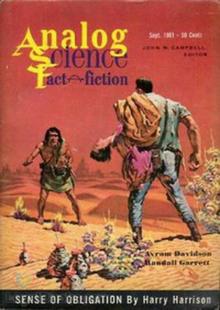 Sense of Obligation
Sense of Obligation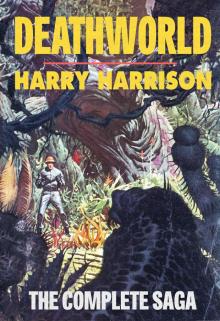 Deathworld: The Complete Saga
Deathworld: The Complete Saga Montezuma's Revenge
Montezuma's Revenge The Ethical Engineer
The Ethical Engineer The Stainless Steel Rat Returns
The Stainless Steel Rat Returns The Misplaced Battleship
The Misplaced Battleship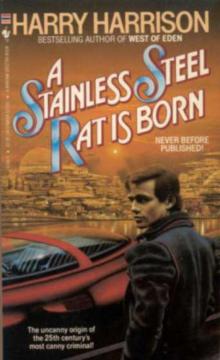 The Stainless Steel Rat is Born
The Stainless Steel Rat is Born Planet of the Damned bb-1
Planet of the Damned bb-1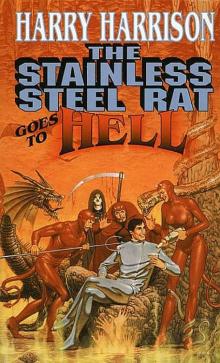 The Stainless Steel Rat Goes to Hell ssr-10
The Stainless Steel Rat Goes to Hell ssr-10 The Stainless Steel Rat Joins the Circus ssr-11
The Stainless Steel Rat Joins the Circus ssr-11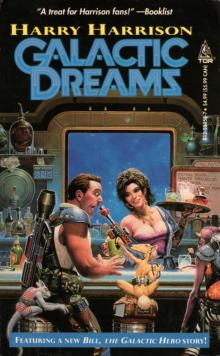 Galactic Dreams
Galactic Dreams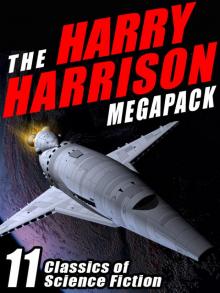 The Harry Harrison Megapack
The Harry Harrison Megapack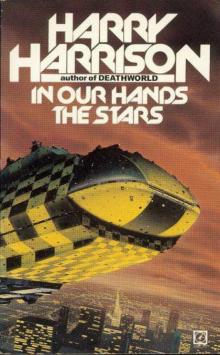 In Our Hands the Stars
In Our Hands the Stars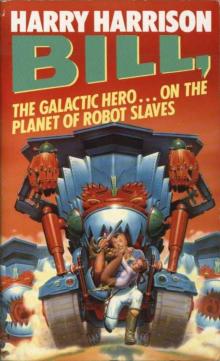 On the Planet of Robot Slaves
On the Planet of Robot Slaves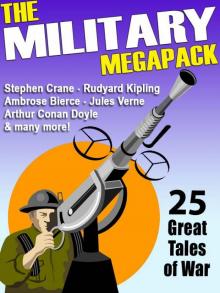 The Military Megapack
The Military Megapack Make Room! Make Room!
Make Room! Make Room! Wheelworld
Wheelworld Winter in Eden e-2
Winter in Eden e-2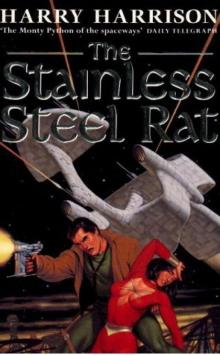 The Stainless Steel Rat
The Stainless Steel Rat The Stainless Steel Rat Goes to Hell
The Stainless Steel Rat Goes to Hell Harry Harrison Short Stoies
Harry Harrison Short Stoies Stainless Steel Rat 11: The Stainless Steel Rat Returns
Stainless Steel Rat 11: The Stainless Steel Rat Returns Stars and Stripes Triumphant sas-3
Stars and Stripes Triumphant sas-3 West of Eden
West of Eden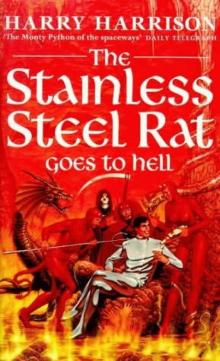 The Stainless Steel Rat Go's To Hell
The Stainless Steel Rat Go's To Hell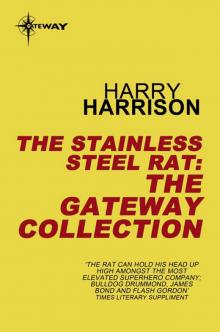 The Stainless Steel Rat eBook Collection
The Stainless Steel Rat eBook Collection Lifeboat
Lifeboat The Stainless Steel Rat Sings the Blues
The Stainless Steel Rat Sings the Blues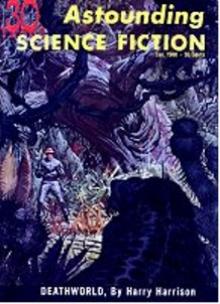 Deathworld tds-1
Deathworld tds-1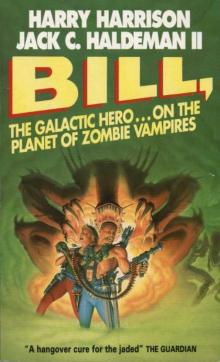 On the Planet of Zombie Vampires
On the Planet of Zombie Vampires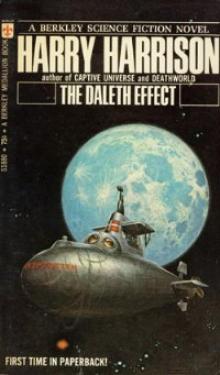 The Daleth Effect
The Daleth Effect On The Planet Of The Hippies From Hell
On The Planet Of The Hippies From Hell The Turing Option
The Turing Option The Stainless Steel Rat Gets Drafted
The Stainless Steel Rat Gets Drafted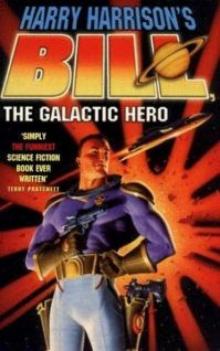 Bill, the Galactic Hero btgh-1
Bill, the Galactic Hero btgh-1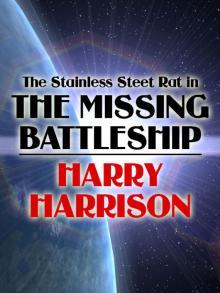 The Stainless Steel Rat in The Missing Battleship
The Stainless Steel Rat in The Missing Battleship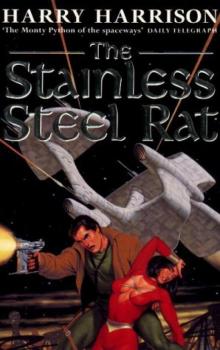 The Stainless Steel Rat ssr-1
The Stainless Steel Rat ssr-1 The Ethical Engineer (the deathworld series)
The Ethical Engineer (the deathworld series) The Stainless Steel Rat Saves the World ssr-3
The Stainless Steel Rat Saves the World ssr-3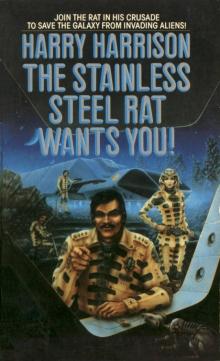 The Stainless Steel Rat Wants You
The Stainless Steel Rat Wants You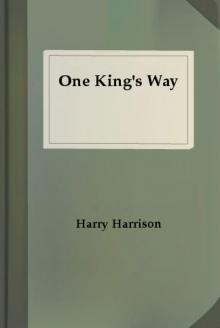 One King's Way thatc-2
One King's Way thatc-2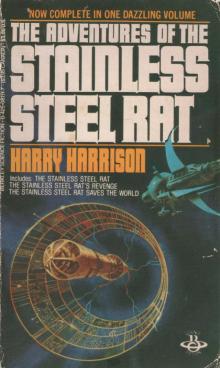 The Stainless Steel Rat Saves The World
The Stainless Steel Rat Saves The World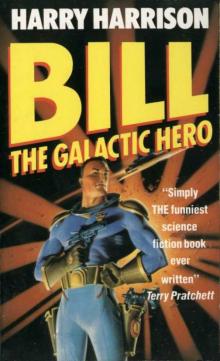 Bill, the Galactic Hero
Bill, the Galactic Hero Stars & Stripes Forever
Stars & Stripes Forever Stars and Stripes In Peril sas-2
Stars and Stripes In Peril sas-2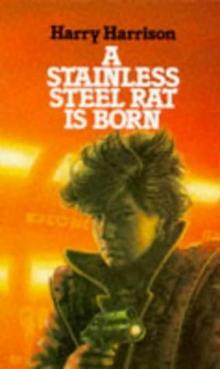 A Stainless Steel Rat Is Born ssr-6
A Stainless Steel Rat Is Born ssr-6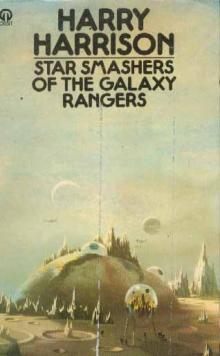 Star Smashers of the Galaxy Rangers
Star Smashers of the Galaxy Rangers Stars & Stripes Triumphant
Stars & Stripes Triumphant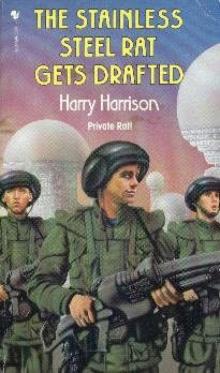 The Stainless Steel Rat Gets Drafted ssr-7
The Stainless Steel Rat Gets Drafted ssr-7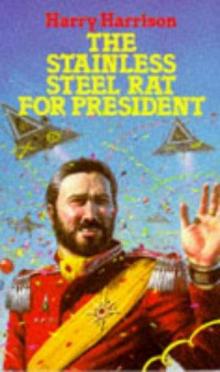 The Stainless Steel Rat for President ssr-5
The Stainless Steel Rat for President ssr-5 The Hammer & the Cross
The Hammer & the Cross The Technicolor Time Machine
The Technicolor Time Machine The Hammer and The Cross thatc-1
The Hammer and The Cross thatc-1 King and Emperor thatc-3
King and Emperor thatc-3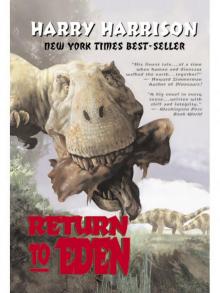 Return to Eden
Return to Eden The Stainless Steel Rat’s Revenge ssr-2
The Stainless Steel Rat’s Revenge ssr-2 West of Eden e-1
West of Eden e-1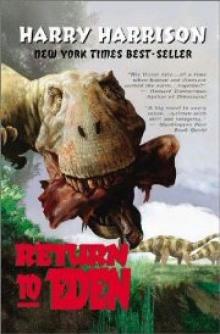 Return to Eden e-3
Return to Eden e-3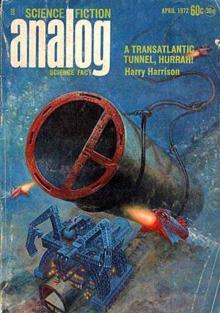 A Transatlantic Tunnel, Hurrah!
A Transatlantic Tunnel, Hurrah! Stars and Stripes Forever sas-1
Stars and Stripes Forever sas-1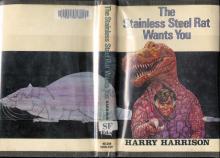 The Stainless Steel Rat Wants You ssr-4
The Stainless Steel Rat Wants You ssr-4 The Horse Barbarians tds-3
The Horse Barbarians tds-3 Planet of the Damned and Other Stories: A Science Fiction Anthology (Five Books in One Volume!)
Planet of the Damned and Other Stories: A Science Fiction Anthology (Five Books in One Volume!)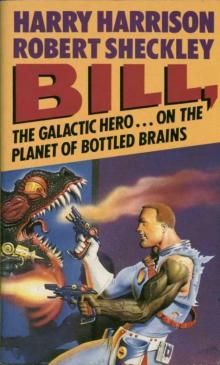 On the Planet of Bottled Brains
On the Planet of Bottled Brains Stars And Stripes In Peril
Stars And Stripes In Peril The Stainless Steel Rat's Revenge
The Stainless Steel Rat's Revenge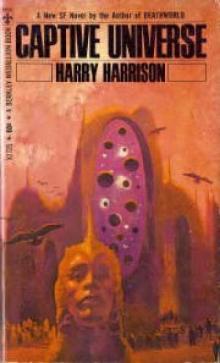 Captive Universe
Captive Universe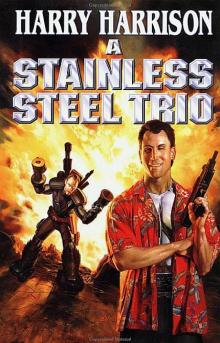 The Stainless Steell Rat Sings the Blues ssr-8
The Stainless Steell Rat Sings the Blues ssr-8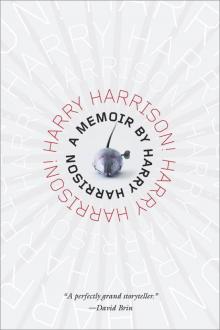 Harry Harrison! Harry Harrison!
Harry Harrison! Harry Harrison! Winter in Eden
Winter in Eden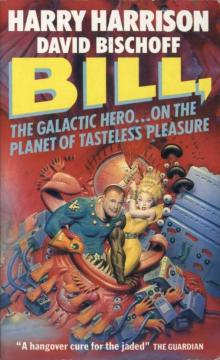 On the Planet of Tasteless Pleasures
On the Planet of Tasteless Pleasures